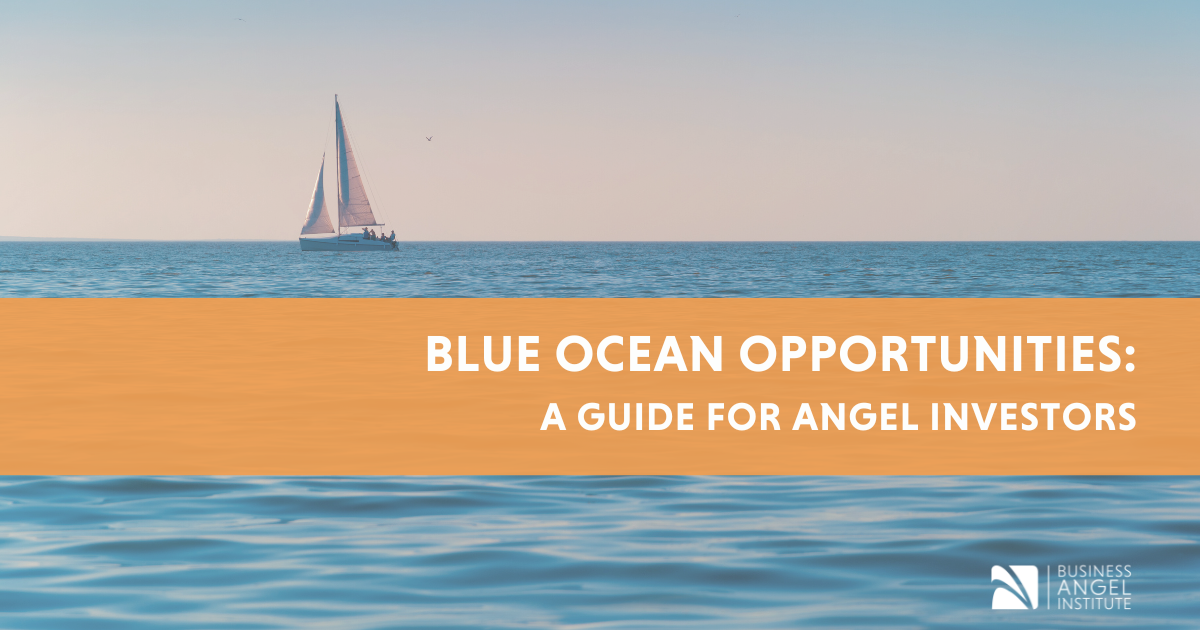In the world of angel investing, where competition is fierce and market saturation is common, the Blue Ocean Strategy offers a refreshing alternative. This approach encourages investors to seek out untapped markets, where competition is minimal and growth potential is vast. By leveraging this strategy, angel investors can maximize their returns and achieve unprecedented success.
What is the Blue Ocean Strategy?
The Blue Ocean Strategy, a concept popularized by W. Chan Kim and Renée Mauborgne, involves creating new, uncontested market spaces—blue oceans—rather than competing in saturated, highly contested markets—red oceans. Unlike the traditional approach, which focuses on battling competitors within existing markets, the Blue Ocean Strategy aims to make the competition irrelevant by crafting new opportunities for growth.
For startups and entrepreneurs, this strategy provides a unique chance to lead in a market where no one else is competing. By focusing on uncharted territories, businesses can establish themselves as leaders and enjoy a significant competitive advantage from the start.
How Can Angel Investors Apply This Strategy?
- Identify Untapped Markets
The first step is to identify markets that are currently underserved or entirely new. This requires a visionary mindset and a willingness to look beyond traditional market boundaries. For instance, companies like Beyond Meat and Impossible Foods created a new niche in the food industry by offering plant-based meat alternatives, targeting both vegetarians and meat-eaters seeking sustainable options.
- Reconstruct Market Boundaries
Look across different industries and strategic groups to find new opportunities. Netflix, for example, transitioned from DVD rentals to streaming, effectively creating a new market space. By reconstructing market boundaries, investors can uncover areas ripe for innovation and growth.
- Focus on the Big Picture
Utilize visual tools like strategy canvases to understand what customers truly value. Instead of getting bogged down by numerical data, look at broader trends and needs. This approach helps in identifying where genuine demand exists and where competitors have yet to venture.
- Reach Beyond Existing Demand
Explore the needs of non-customers. The gaming industry, for instance, successfully attracted non-gamers by developing casual games. By focusing on unmet needs, angel investors can discover new market segments and create substantial value.
- Ensure Strategic Alignment
Ensure that the business model aligns with price, cost, and adoption strategies. The Dollar Shave Club disrupted the razor market with a subscription model that offered high value at a lower cost. Such strategic alignment is crucial for capturing and maintaining market leadership.
- Overcome Organizational Hurdles
Encourage innovation within organizations by addressing internal resistance and fostering a culture that embraces new strategies. Google’s 20% time policy, which allows employees to work on side projects, has led to groundbreaking products like Gmail.
Conclusion
By adopting the Blue Ocean Strategy, angel investors can navigate beyond traditional competition and discover new avenues for growth. This approach not only maximizes returns but also positions investors and their portfolio companies for long-term success. As Peter Drucker famously said, “The best way to predict the future is to create it.” So why swim in a red ocean when you can create your own blue one?
How YOU can use the blue ocean strategy to maximise your returns is also part of our Certified Business Angel program!



